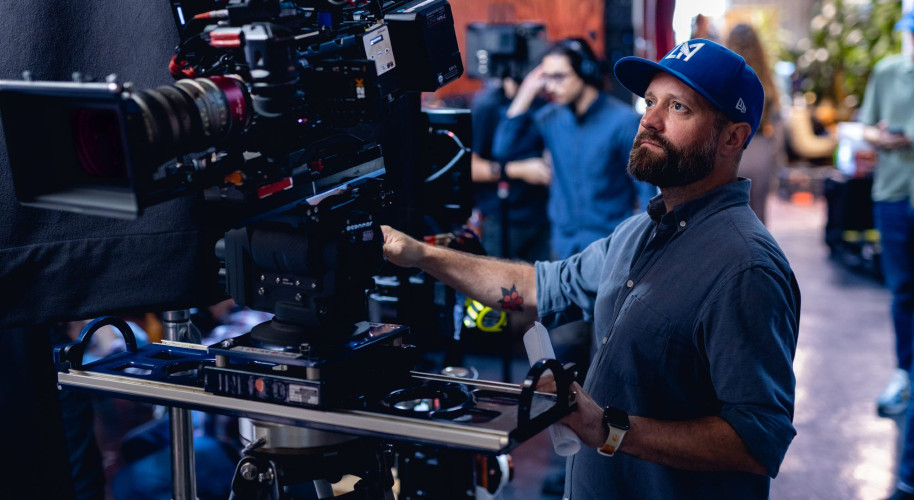Ever dream of creating entertaining, impactful videos for a living? YouTube sensation Cherry Wallis and her technical consultant Chris Pearless tell us what they’ve learned throughout her channel’s rise to fame.
With a channel boasting more than half a million subscribers, Cherry Wallis is the perfect embodiment of a modern video entrepreneur.
She has her own branded merchandise, corporate partnerships with the likes of Disney and Warner Bros, and even a Nickelodeon Kid’s Choice Award for her vlogging. Her first full-time employee and friend, Chris, has recently been hired to keep content production values high - leaving her more freedom to manage creative strategy.
Turn back the clock seven years, however, and Cherry Wallis was just a student with a Logitech webcam and a passion for making videos.
“I used to watch a lot of different YouTubers, and always thought that making vlogs looked like fun. One day, I bought myself a webcam and started shooting these little opinion piece videos in my bedroom,” she begins. “I thought it was absolutely wild that even 10 people had clicked through to watch me talking!”
Things changed when a three-minute video of Cherry mixing diet coke with milk – a drink she enjoys – went viral. Suddenly, she found her small hobby channel had become a full-blown community, inundated with hundreds and thousands of viewers requesting more content.
Cycling through genres including cooking, makeup, and even comedy sketches, Cherry eventually discovered a popular theme with Harry Potter’s Wizarding World. It still makes up the majority of her material today.
“Despite all the growth, there was no point in which I thought, I’m going to make this a business,” she explains. “My plan was to be a primary school teacher after university! Then, as I began to see this amazing audience grow and an income come in, I decided to keep on working with YouTube to see where it led.”
From generating commercial interest to editing for algorithms, Cherry and Chris tell us more about the rules they’ve learned to get to where they are today.
Rule 1: Don’t expect to be rich and famous
“Just to cut a myth in the bud: we’re not rolling in millions of pounds,” says Cherry. “Yes, there are some channels that earn disgusting amounts of money. But for most of us, it’s just like being your own mini broadcaster - you have to do a lot of work. We generate three videos a week from scratch, and it’s stressful as everything is quantified.”
With a variety of factors normally affecting a channel’s revenue, Chris explains that even two content creators with the exact same subscriber count or video views could earn vastly different amounts. And getting a high enough subscriber count to live off YouTube in the first place can be a challenge.
“If you’re starting today, I think the best thing to do is to find a niche. Many lifestyle topics are oversaturated with content, but channels that delve into less well-known hobbies like retro computers, for example, are seeing massive growth as they stand out.”
Rule 2: Be creative with different revenue streams
A common misconception is that YouTubers only earn through revenue made directly from YouTube, run through a program called Google AdSense.
“I work with a lot of brands for campaigns, including Warner Brothers, Disney, and various fashion retailers,” Cherry continues.
“You approach people, they approach you and together you figure out integrations that are right for your audience,” Chris adds. “What’s interesting here is that in the UK, the Advertising Standards Authority is very good at telling broadcast audiences what is or isn't an ad. Whereas in the US, that's not true. Just remember that YouTubers may not be as heavily controlled in certain territories – they might be allowed to shoot some hidden ads.”
Rule 3: Pay attention to YouTube’s algorithm
“When I started it was the shorter the better, keep the video around 2-3 minutes and you’re fine,” Cherry reveals. “Now YouTube has changed things up so that viewer watch time, is more important. The longer and more engaging your video is, the more watch time you get, the more YouTube is going to favour you.
“An extra perk to longer videos is you can include more ads without frustrating your audience. A common misconception is YouTube places ads for you, but actually as a content creator, you decide where the ads are placed.”
Another way to ensure your channel figures stay high is being consistent with your video uploads. “When you dip, it does affect your numbers,” Cherry tells. “YouTube’s algorithm used to only really value views per video, but now it does seem to pay more attention to upload consistency.”
According to Cherry, this has created some rifts in the community. Animators with YouTube channels find it harder to achieve to these new standards when their time-consuming work needs to be both longer, and uploaded more regularly. The toll on mental health can also be serious for a YouTuber if a week of illness or vacation affects popularity.
“That’s definitely something that’s on my mind. Sometimes I’d love to just take a month off, but I’d feel too guilty if I didn’t upload videos for my audience,” she explains. “It would be disappointing to them, and it would also mean a month of no income for me and Chris. The best solution we’ve found is to prefilm as much as possible if we want to take time off.”
Rule 4: Create an efficient workflow
Of course, another crucial aspect to delivering content regularly is to continually improve your production workflow so that turnaround time is as quick and stress-free as possible.
“Online, most people don't care as much about quality compared to cinema or television audiences,” Chris explains. “However if you subtly improve the way your video looks whilst also outputting regularly, you will be more attractive to brands and corporate partners.”
For project management, both Cherry and Chris use Trello and Google Calendars to ensure planning, shooting, and editing days for each video are accurately scheduled. They typically dedicate two days a week to shoot multiple videos, and aim to output an average of 12 15-20 minute videos a month.
“We’ve invested in better lighting and a camera capable of 4K. We also now use DaVinci Resolve to edit,” he continues. “Our turnaround’s incredibly quick - there was one video where were had to shoot, edit and upload all in a day!
With some of the other NLE tools, that would have been too difficult as you have to follow a linear workflow: first cut, lock the cut, do the mix, do the grade. In Resolve, I can do post production in a non-linear way, hopping between edit, grade and mix without round trips to other software.”
Rule 5: Know your audience
It might seem obvious, but knowing who your audience is and what they want is a key ingredient to creating a successful YouTube channel.
“We shoot in 4K, but upload in 1080 as 4K takes noticeably longer to process on YouTube. Analytics also tell us that the vast majority of Cherry’s audience watch on their phones, so would struggle to notice the difference anyway,” Chris reveals.
“Geography and age are also very useful to cite when working with brands, as you need to make sure that you collaborate with the right ones for your audience,” Cherry adds. “It also means you can adjust your delivery to make things easier for those watching. Most of my audience are currently from the US, and as I do a lot of product based content, I now convert from pounds to dollars so they don’t have to.”






































